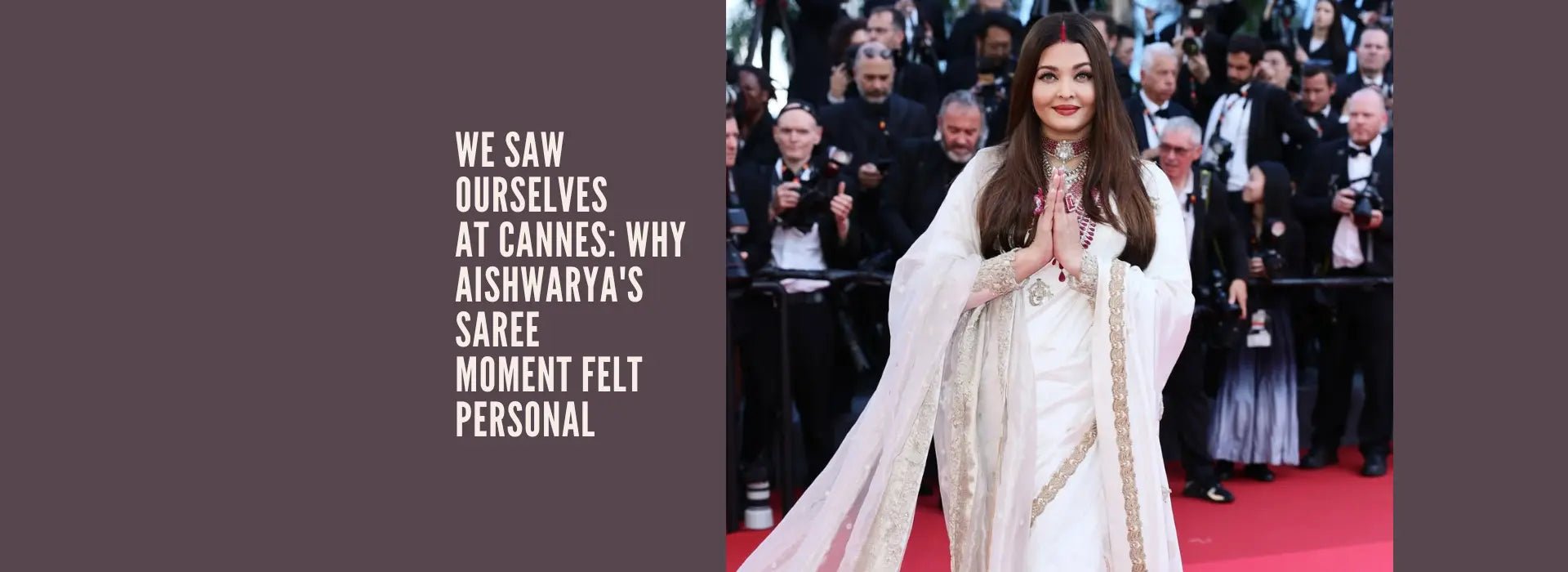Table of Contents
This year at Cannes, Aishwarya Rai didn’t just walk the red carpet—she draped herself in something deeper. In a sea of sequins and sculpted gowns, her saree stood tall—not just as a fashion statement, but as a reflection of something more intimate, more collective. For many of us watching from across the globe, that moment felt personal.
Because we saw ourselves.
A Fabric of Memory
The saree is not just six yards of cloth. It’s the scent of our mother’s wardrobe. The rustle of our grandmother walking into the puja room. The quiet confidence we feel when we wear one ourselves—despite the world insisting that fashion needs to be fast, western, and new.
So when Aishwarya chose to wear a saree to one of the world’s most-watched red carpets, she wasn’t just styling nostalgia—she was restoring reverence. For tradition. For grace. For every woman who’s ever been told that a saree is “too ethnic,” “too Indian,” or “not global enough.”
A Global Moment Rooted in Home
There’s something powerful about showing up to Cannes—a space that has long dictated Western beauty ideals—and choosing not to adapt, but to stand rooted. Aishwarya didn’t compromise. She brought the saree as is. No apology. No translation.
And for those of us building brands, identities, or dreams around Indian design, this moment was a quiet confirmation: the world is finally ready to listen.
Why It Matters for Now
Fashion has always been political. What we wear, especially on platforms like Cannes, tells the world what we believe deserves attention. Aishwarya’s saree told the world:
“This fabric carries stories.”
“This silhouette is strength.”
“This is beauty—on our terms.”
For young girls in diaspora watching her screen presence, for local weavers who keep this tradition alive, for brands like ours trying to make the saree aspirational again—it wasn’t just red carpet content. It was visibility.
A Saree for the Future
At Indidha, we believe the saree doesn’t need a revival. It needs a reframe. And this moment helped. Because when we saw Aishwarya, we didn’t just see a celebrity. We saw our mothers. Our sisters. Ourselves.
We saw what it means to take up space while staying rooted.
And we felt seen.


